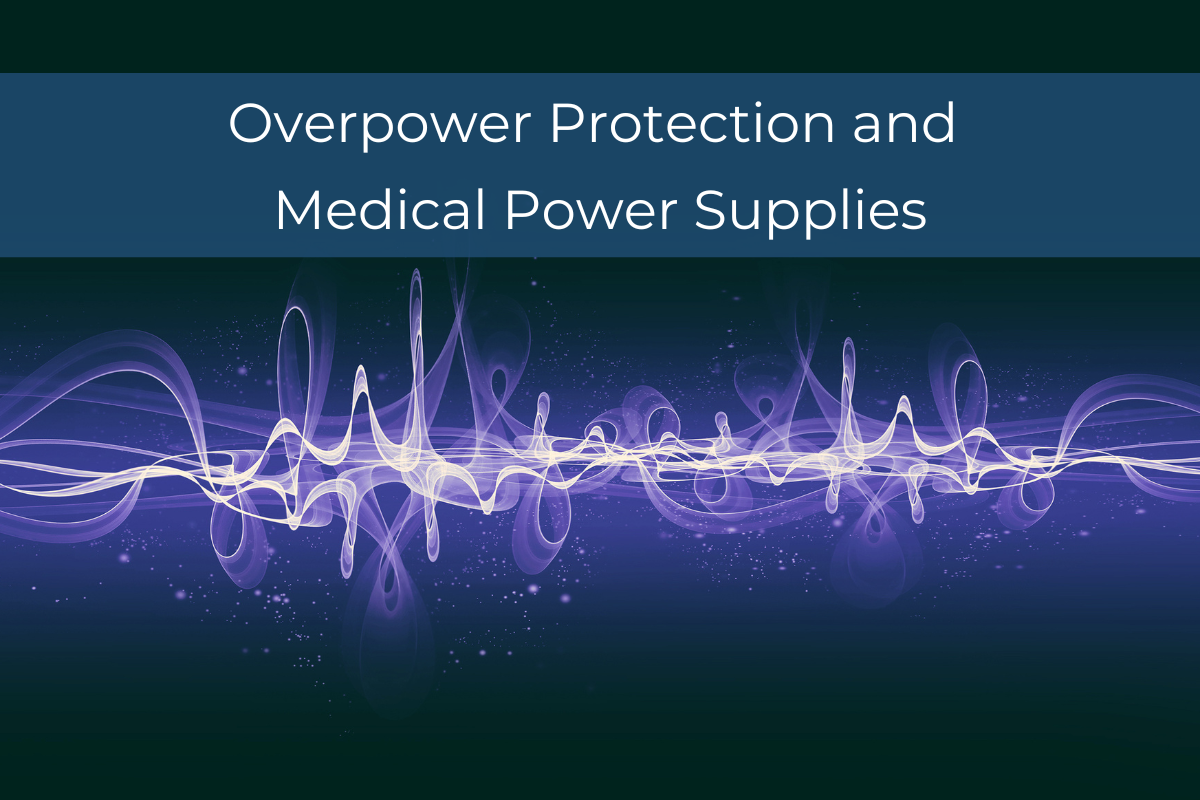Power outages, surges, and other unexpected electrical events can greatly impact medical devices in performance, function, and safety. To protect patients and operators, as well as guarantee reliable performance, power supplies for medical devices need to have certain protections. Some protections, including overpower protection (OPP), ensure that medical devices cannot draw more power than they can handle. We’ll cover OPP and why it’s important in medical power supplies.
What is Overpower Protection (OPP)?
If a device or circuit demands excessive power, overpower protection (OPP) functions as a brake to prevent a power supply from drawing more current than it is able to handle. Protection mechanisms within the power supply will respond, generally by shutting down the unit and preventing damage to the device or harm to the patient.
Why is Overpower Protection Important in Medical Device Power Supplies?
Without overpower protection, medical devices can experience one or all of the following:
- Component failure: When a power supply draws excessive current, the components within the device can overheat and fail.
- Fire hazards: If overheating is extreme, this can even lead to fires.
- Safety risks: This is clearly a safety risk, but drawing excessive power could also injure operators and patients in other ways, such as electric shocks.
- Data loss: When components fail in a device, data loss may also occur.
In short, OPP is important because it prevents critical medical equipment from unexpectedly shutting down, safeguards valuable devices from potential damage, and ensures medical devices meet necessary regulatory standards.
What are some things medical device manufacturers should consider with OPP and power supplies?
Depending on where you are planning on marketing your medical device, it needs to comply with specific regulatory standards. The primary international standard for medical electrical equipment is IEC 60601-1, also known as EN 60601-1. Overcurrent protection is listed within the standards, including protection for overloads and short-circuiting.
CE marking, for devices sold within the EU, indicates that electrical medical devices are compliant with EU directives, including those related to electrical safety, such as overpower protection.
What are some examples of OPP in power supplies for medical devices?
Some examples of OPP in medical power supplies include:
- Automatic Shutdown: If there is an excessive power draw, OPP can force power supplies to shut down automatically.
- Current Limiting: To prevent overload, power supplies can limit current output.
- Thermal Protection: Excessive temperatures can trigger a shutdown of the power supply.
What should you look for in power supply protections?
The seven protections for power supplies medical device manufacturers should look for include OPP, as well as these other measures:
- Overcurrent protection (OCP)
- Overvoltage protection (OVP)
- Undervoltage protection (UVP)
- Short-Circuit Protection (SCP)
- Over-Temperature Protection (OTP)
- Surge and Inrush Protection (SIP)
RAM Technologies offers all 7 forms of protection in our PC-based medical power supplies. Visit our product pages to learn more about our power supplies or contact us with any questions about the protections and customizations we offer.
RAM Technologies’ power supplies are 60601-1 3.2 certified. When you’re designing your medical device and need help with a PSU, contact us for details.
More Resources:
What the FDA Moving to IEC 60601-1 3.2 Means for Manufacturers
7 Protections to Look For in a Power Supply
EMC Compliance and EN 55011
